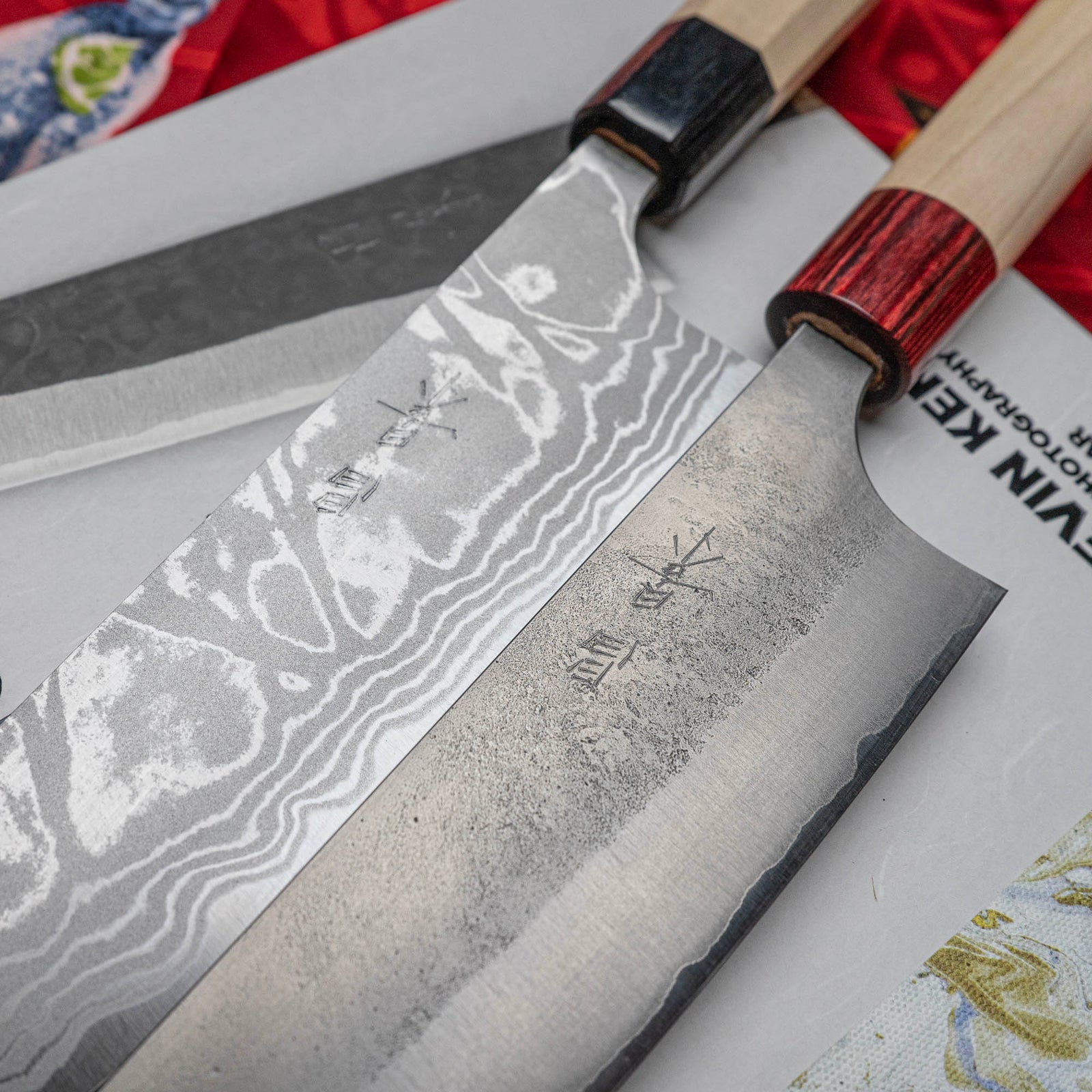Free shipping on orders over $100 - Excluding konro grills
Free shipping on orders over $100 - Excluding konro grills
Japanese Knives
Sharpening
Accessories
"Is This a Sushi Knife?" Single-bevel Knives v.s. Double-bevel Knives
March 05, 2024 3 min read

Let’s be clear - we have a lot of knives. So many knives, in fact, that we have six retail stores, a web store, a YouTube Channel, a book, two movies, and a whole lot of blogs to help you pick which knife (or knives) are suitable for you out of literally hundreds of options. But all of our knives have a few things in common: They’re all awesome! That’s a big one. They also make your life in the kitchen easier. And they’re (almost) all Japanese!
Logic would dictate that our Japanese knives were primarily designed for making Japanese food, and when I say Japanese Food, you probably think of Sushi! It’s easily the single most popular and recognizable Japanese culinary export. So does that mean that all Japanese knives are Sushi Knives? Far from it! You certainly wouldn’t be the first to ask us for sushi knives expecting a general-purpose Japanese Kitchen knife. Still, if you walk into one of our shops and ask us about Sushi knives, you’re more than likely to be shown some unusual-looking blades that are highly specialized for cutting fish. The yanagiba and deba are designed for processing and the breakdown of fish, and they are very traditional sushi knives. Even though they look pretty different from each other, they have one massive thing in common…
They are “single-bevel”. Single Beveled knives are quite different from most other chef’s knives. They are only sharpened on one side of the blade (meaning there are “right” and “left” handed versions of each) and the reverse side is concave. The deba is usually shorter and very thick, making it ideal for the fishy dirty work - head and tail removal, removing the fillets from the ribs, that sort of thing. The Yanagiba is long and slender. Perfect for your presentation cuts of sashimi.

One side of single-bevel knives is sharpened, the other slightly concave to help food release.
However, these Single Beveled knives only represent a small fraction of the plethora of knives in our shop. The vast majority of Japanese knives are Double Beveled. This means they are sharpened and ground on both sides of the blade, usually symmetrically. You have almost definitely used a double-beveled knife before, as double-beveled shapes are much more numerous - gyuto, santoku, petty, nakiri, and so on. All of these guys are typically sharpened right down the middle. Any western kitchen knife you’ve used will be a double-bevel knife. These knives generally are much easier to use, as they are designed to cut in a straight line. For everyday work like chopping up onions, tomatoes, boneless meats, herbs - double-beveled knives give you a lot more mileage than their single beveled cousins. If you cut a potato with a single-bevel knife, it'll skew to one side, not cutting straight.

So, from where does this misunderstanding stem? I think because sushi is so recognizable as something distinctly Japanese, and lots of people don’t realize the breadth of what popular and traditional Japanese cuisine consists of. Take a look at the book The Japanese Grill by Tadashi Ono and Harris Salat. It covers Japanese BBQ - a single topic that some people don’t even realize is a thing - that is just as commonly prepared and enjoyed in Japan as sushi! Like single beveled sushi knives, there indeed exists a whole set of tools for the Japanese grill, and many other styles of cooking. All of our western knives aren't considered "lasagna & hamburger knives", and it's much the same in the rest of the world.
So do you want a sushi knife, or do you want a regular Japanese kitchen knife? If you plan to slice up fish daily, grab yourself a deba to do the heavy butchering, and a yanagiba for the delicate sashimi slicing. If you simply want a reliable kitchen knife, we have some great articles to help you find the right knife. The best place to start is a gyuto, considered the most versatile kitchen knife out there. If you prefer a smaller knife, you might lean towards a santoku, while nakiris are generally better for folks who eat a lot of veggies.
I hope this helped clear up the somewhat ambiguous term “sushi knife” for you! As always, if you need help choosing, chat with us here, or visit one of our shops, and we’ll be happy to help you pick.

Owen Whitinger
Owen is another ex-chef among our ranks. After Chef-ing in Edmonton for around 12 years, he gave it up to be a human being again! He moved out to manage the Vancouver shop in 2018 and never looked back. Later, nerds! He can almost definitely beat you in a game of Street Fighter. come chat with him about football, steel, and how we are, once again, living in a golden age of rap music!
Subscribe
Sign up to get the latest on sales, new releases and more …




















